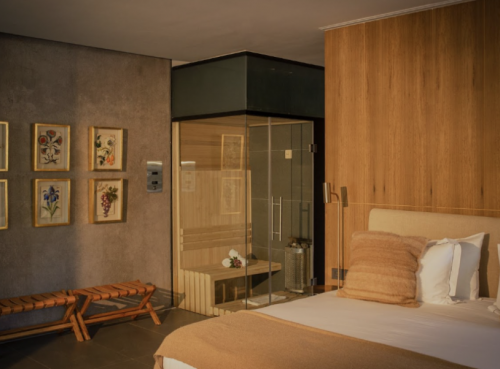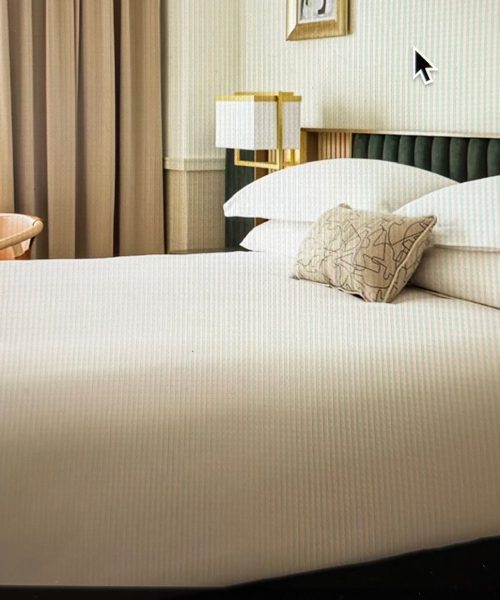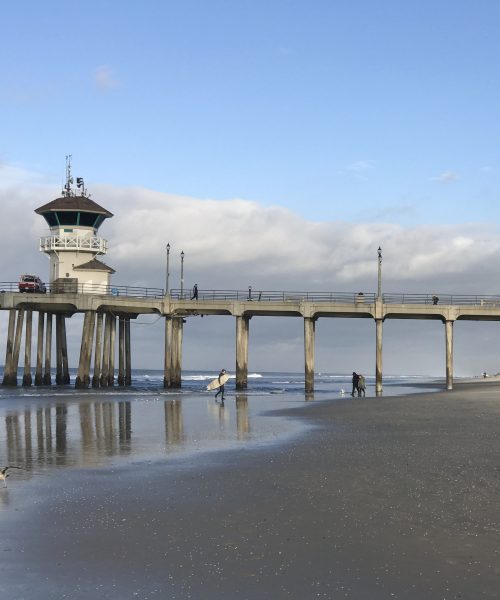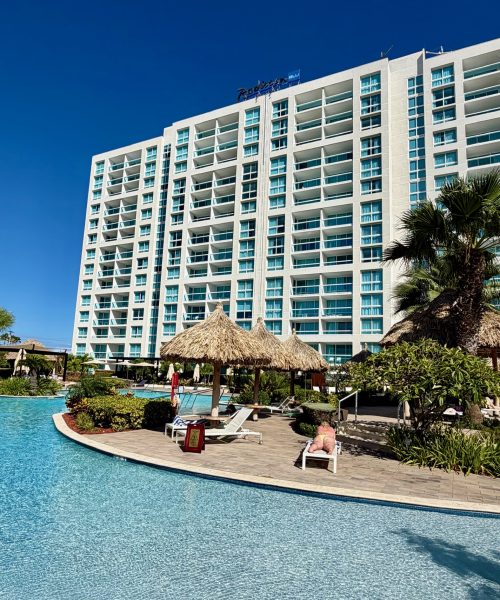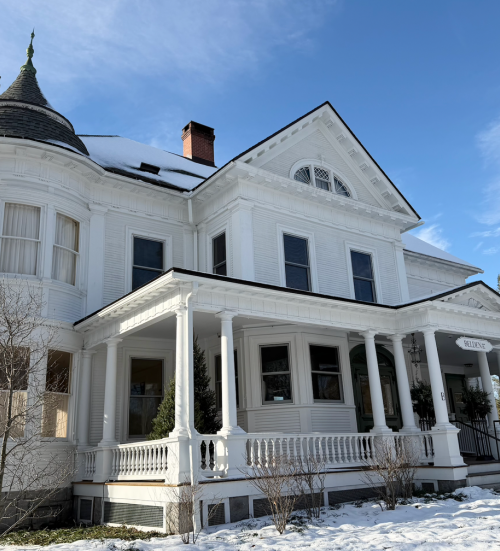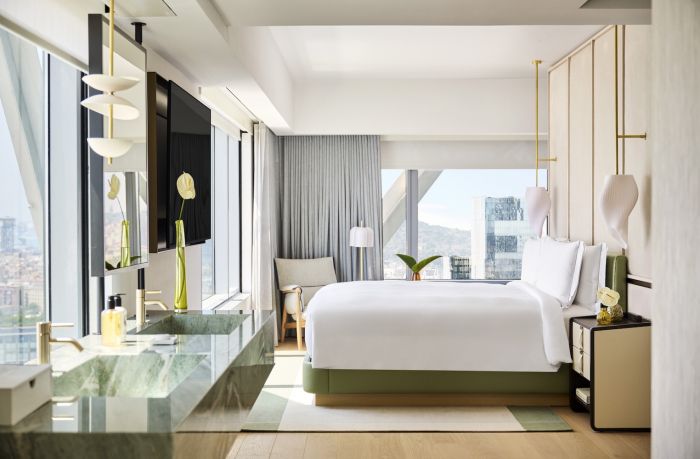
Barcelona is a city of contrasts—sea and mountain, history and innovation—and nowhere are they more elegantly expressed than at Hotel Arts. Rising 44 stories above the Port Olímpic, this gleaming steel and glass tower—originally built as part of Barcelona’s 1992 Olympic-era reinvention—has long served as a symbol of the city’s transformation. Its location, on the seam between the city and the sea, gives it a kind of natural glamour. Now, three decades after its debut, it has quietly reinvented itself.
The redesign begins where it matters most: the guest rooms. Design firm Meyer Davis led the transformation. Their approach is exceedingly thoughtful. Rooms facing the sea are done in soft greens and blues and sun-bleached tones. Mountain-facing rooms are warmer, with ochre and terracotta accents that nod to Barcelona’s earthier side. Both palettes speak to the city’s geography. Everything is composed to draw the eye outward—toward the sea, or toward the mountains. And it works. Locals speak of “lado mar” and “lado montaña” as orienting forces—directions that shape how one moves through the city. That same duality shapes the new interiors. Straight lines reference the Cerdà grid; curves nod to former resident and architectural genius Antoni Gaudí.
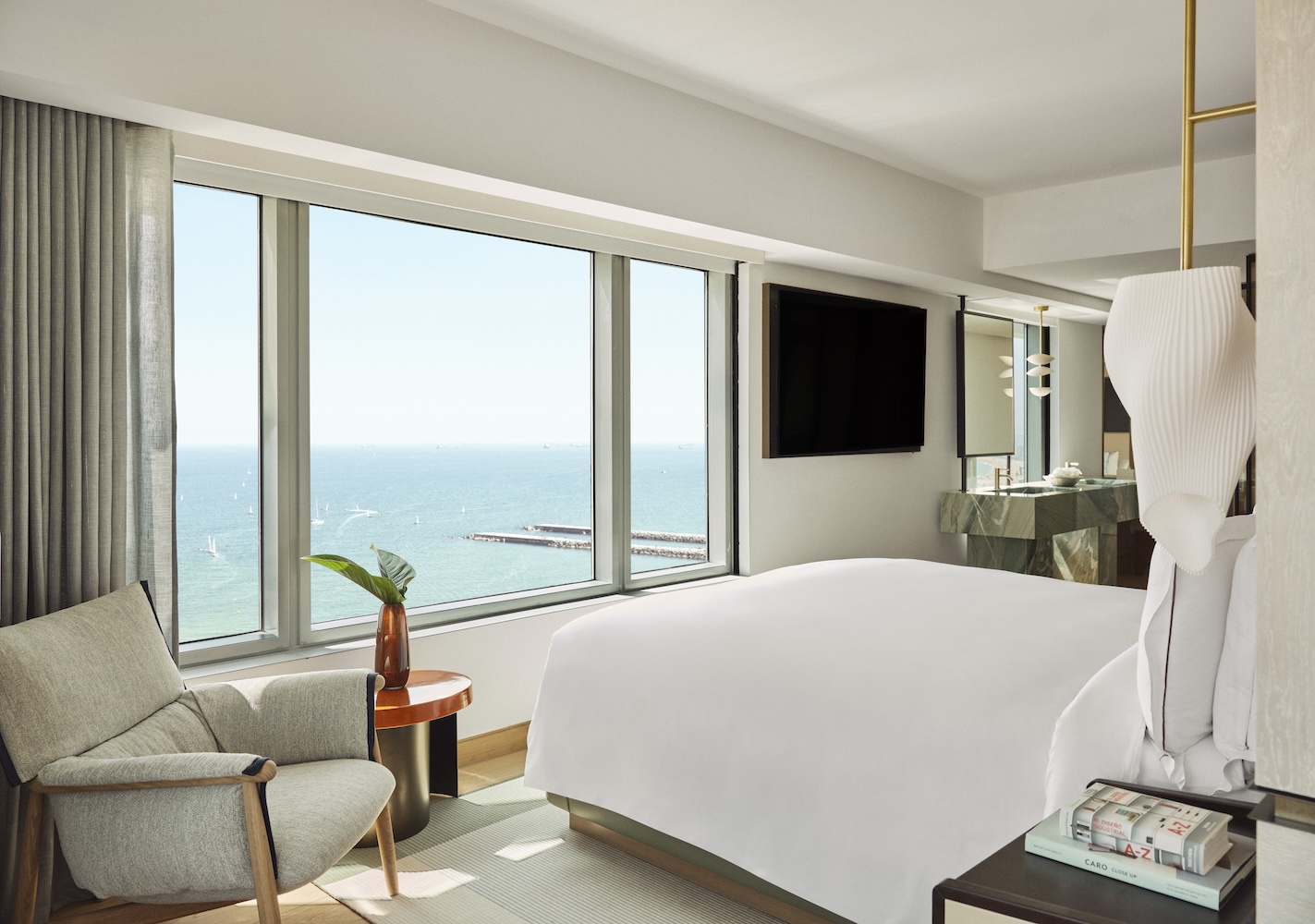
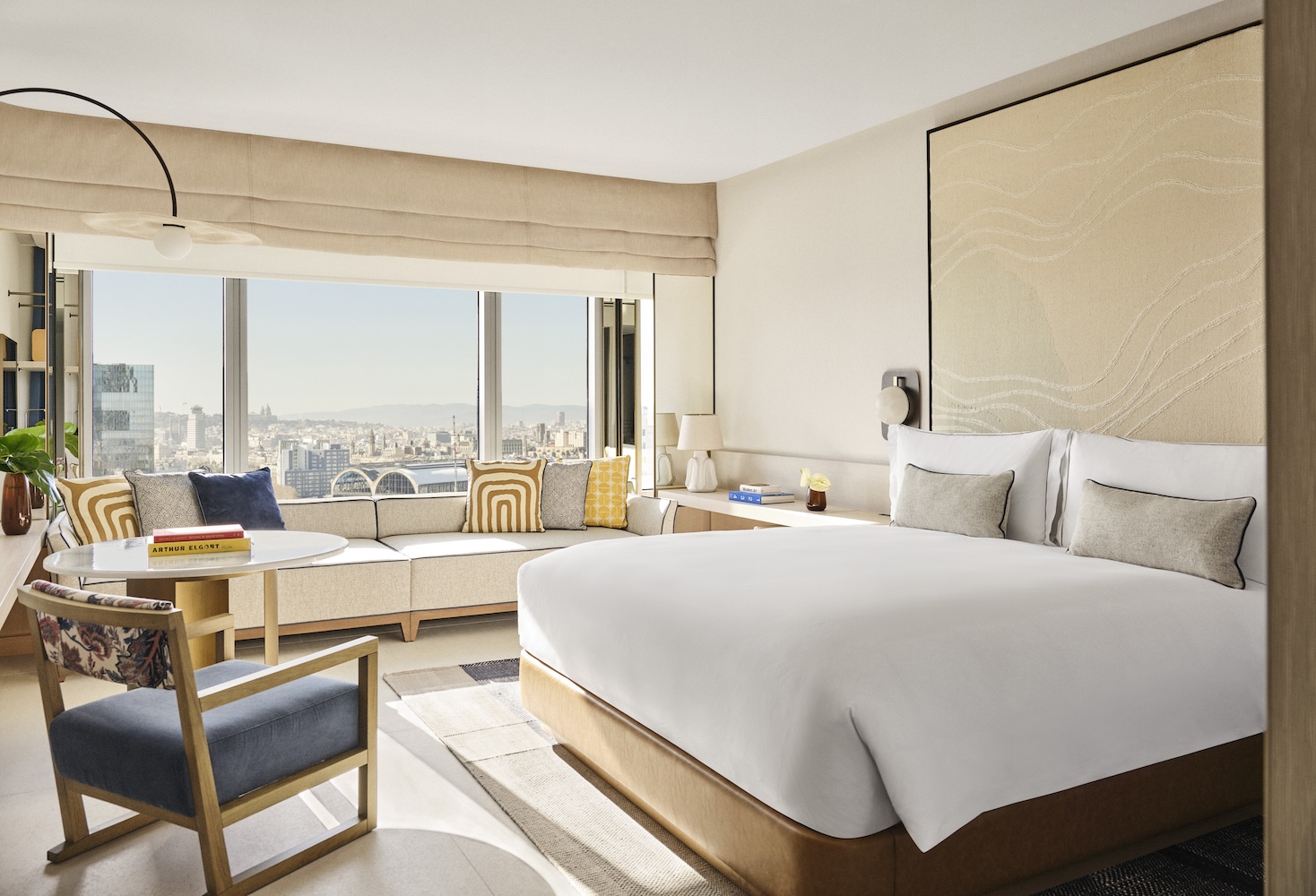
The top-tier accommodations—the Arts Suite and Mediterranean Suite—sit along the seafront corners of the upper floors. They’re spacious, refined, and livable. Natural light floods the living areas. Every seat faces the view. I stayed in one of these newly reimagined suites, and it was one of the loveliest hotel rooms I’ve ever experienced. The layout has been opened; the space is expansive and airy. My ocean-facing room featured soft hues of seafoam green. The open floor plan featured a large soaking tub (one of my favorite hotel amenities), angled perfectly toward the windows and the Mediterranean. Like an extension of the sea, the ambiance is calm and restorative. And the views, simply stunning.
Details are subtly intentional. Handwoven headboards by local artist Lorena Canals serve as sculptural centerpieces, each one unique. Ceramics by Rosa Cortiella add texture and tactility. There’s a sense that nothing was chosen off the shelf. Even the lighting feels purposeful, casting soft illumination rather than harsh spots.
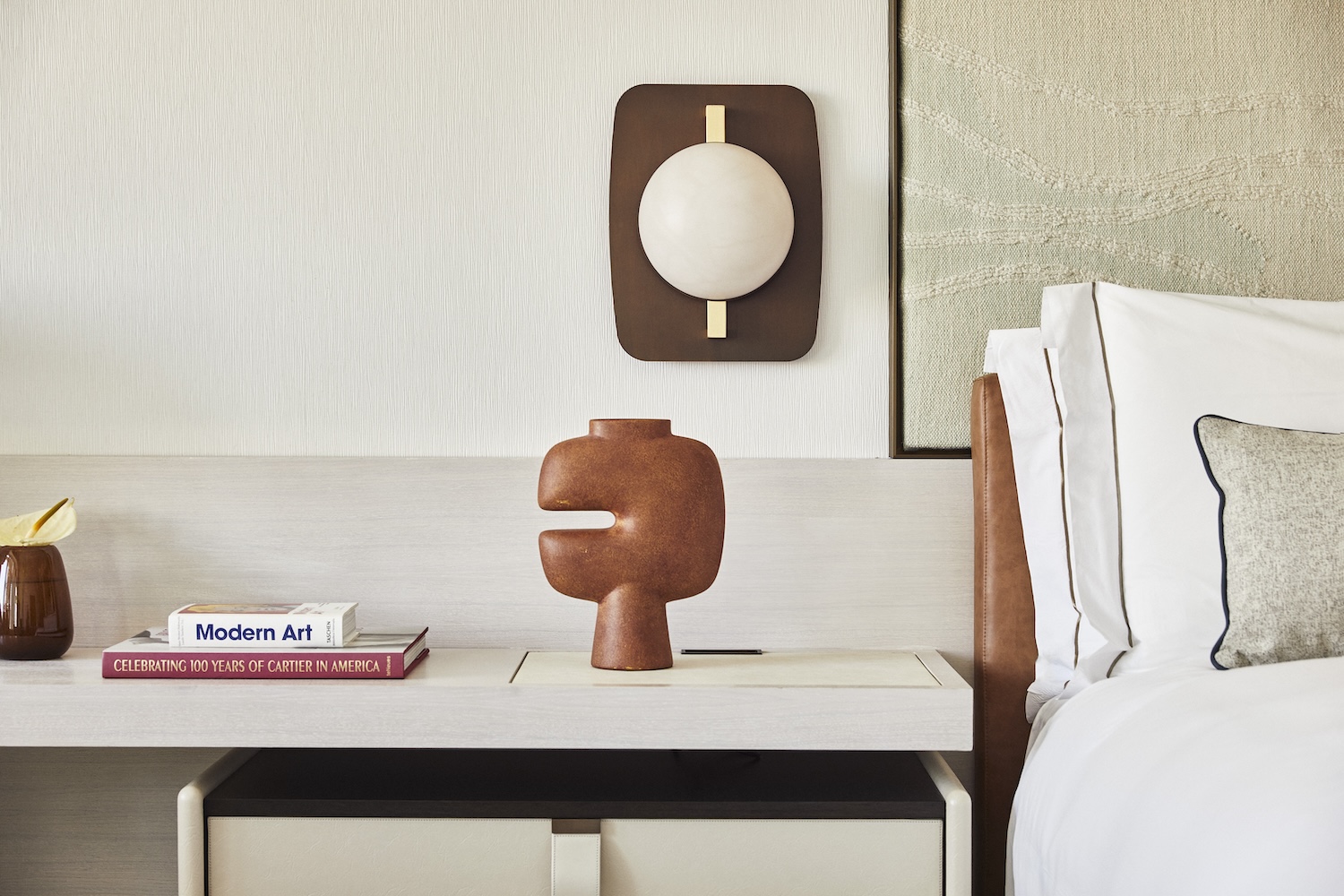
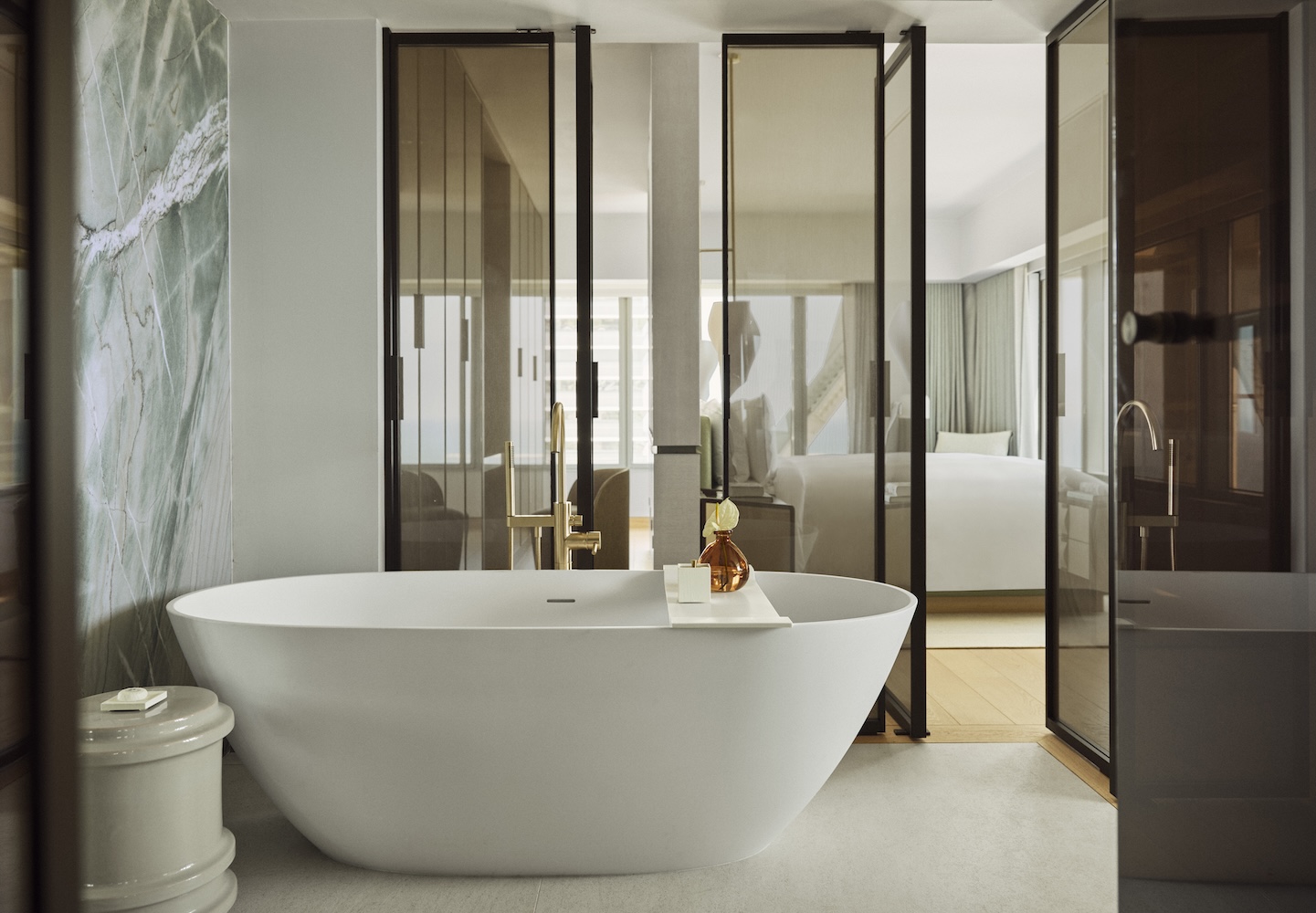
Since it opened in 1994, Hotel Arts has stood out—not only for its height but also for its ambition. Designed by Chicago architect Bruce Graham, the tower remains the tallest coastal building in Spain. At its base, Frank Gehry’s monumental fish sculpture still ripples in the sunlight, a kinetic landmark that has become iconic. There’s urban energy on one side, oceanic calm on the other. Step outside and you’re in the thick of Barceloneta’s boardwalk life: cafés spilling onto the promenade, morning runners, couples on rental bikes.
The rooms are only the first step in a broader transformation. Public spaces, restaurants, and the spa will follow. But even now, the hotel feels renewed. The updates honor the hotel’s past, and continue to build on it. Fittingly for a hotel named Arts, the lobby doubles as a gallery space—an intentional nod by the management to its creative moniker. Vibrant floral arrangements, the color of which changes weekly, fill the lobby space, where check-in guests are greeted with a cold drink.
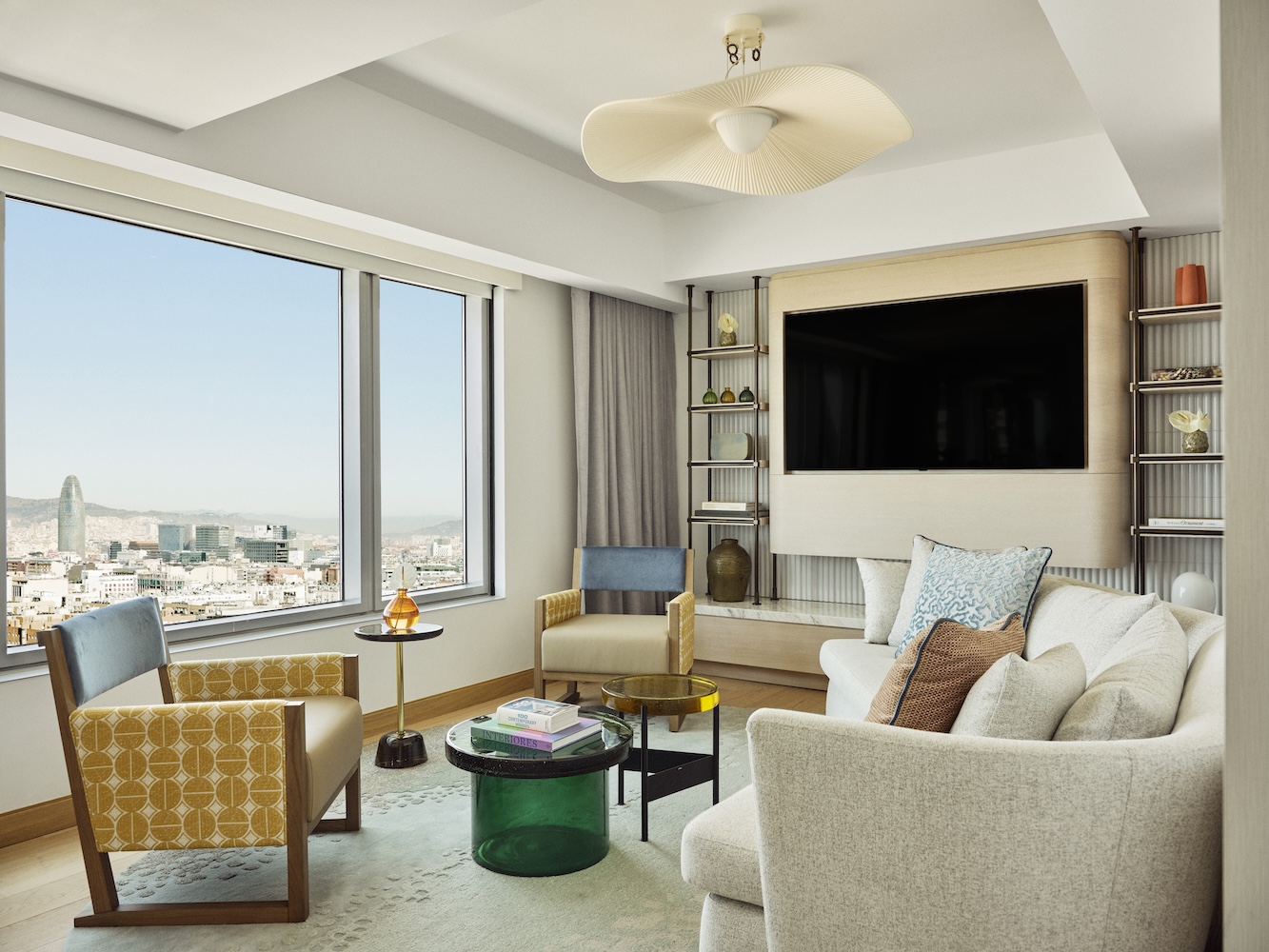
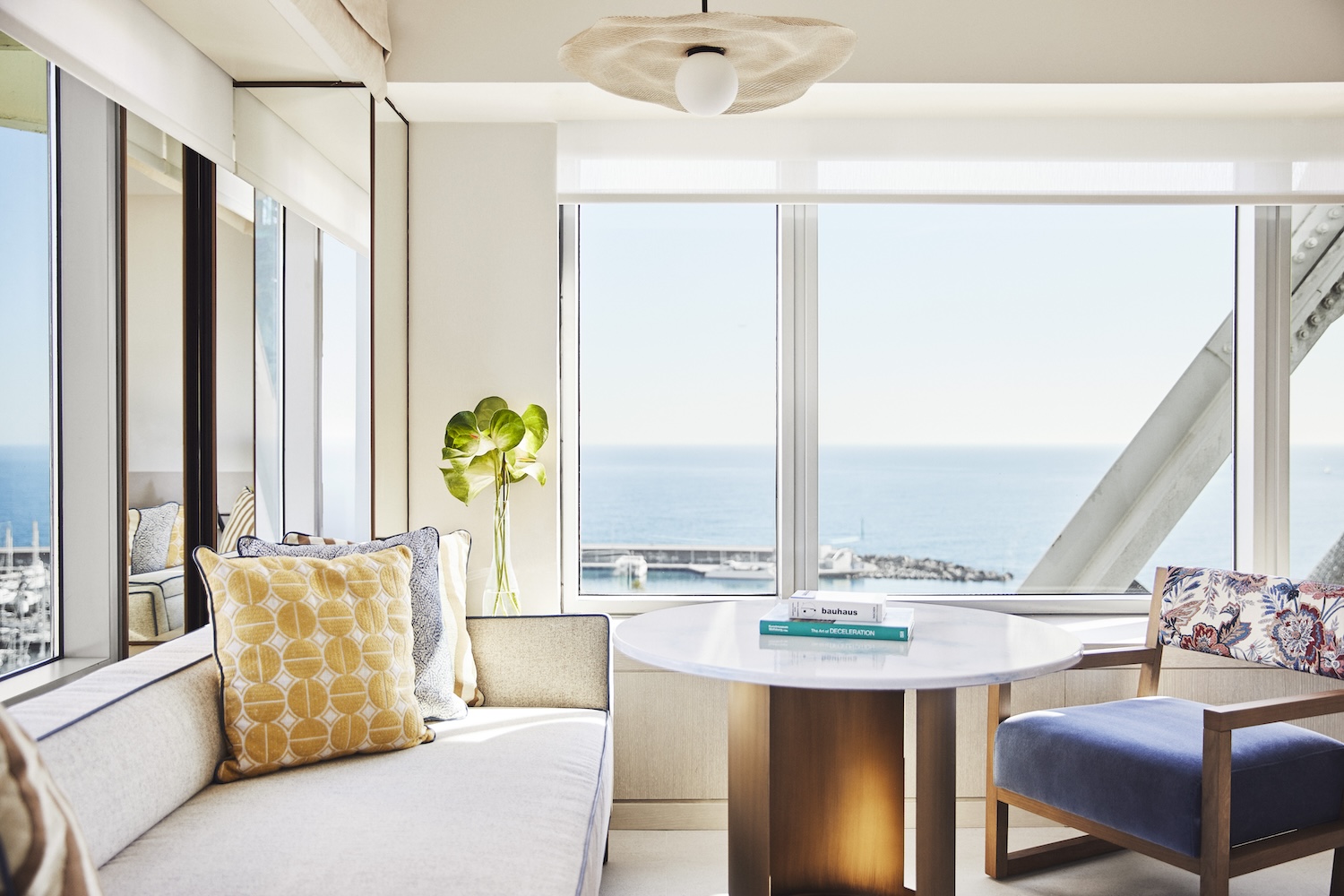
Hotel Arts is often described as a resort within the city, and that still holds true. There are sun-drenched terraces, two outdoor pools, and a two-star Michelin restaurant that draws locals as well as guests. But it also works as a city hotel—central enough to walk the famed Gothic Quarter, yet removed enough to escape it. Though it appears massive, the hotel leans boutique. Service is polished, professional, and gracious. Staff know the city and speak about it like locals. If you need a gallery opening, a late table, or a tailored bike route through the Eixample, they’ll make it happen.
Hotel Arts’ latest evolution isn’t a reinvention so much as a refinement—proof that even icons can evolve with grace.
Photos courtesy of Hotel Arts Barcelona
![]()
